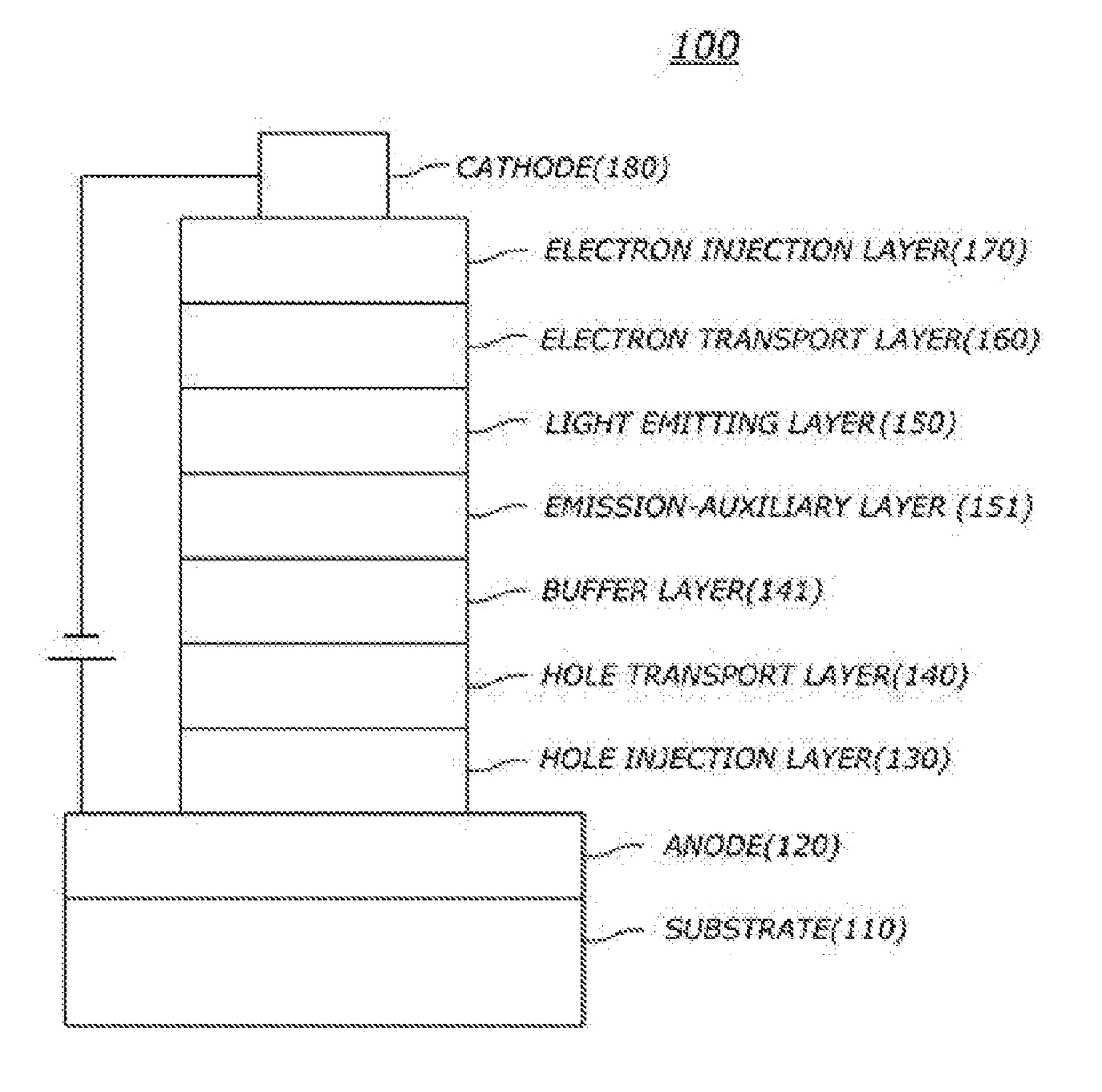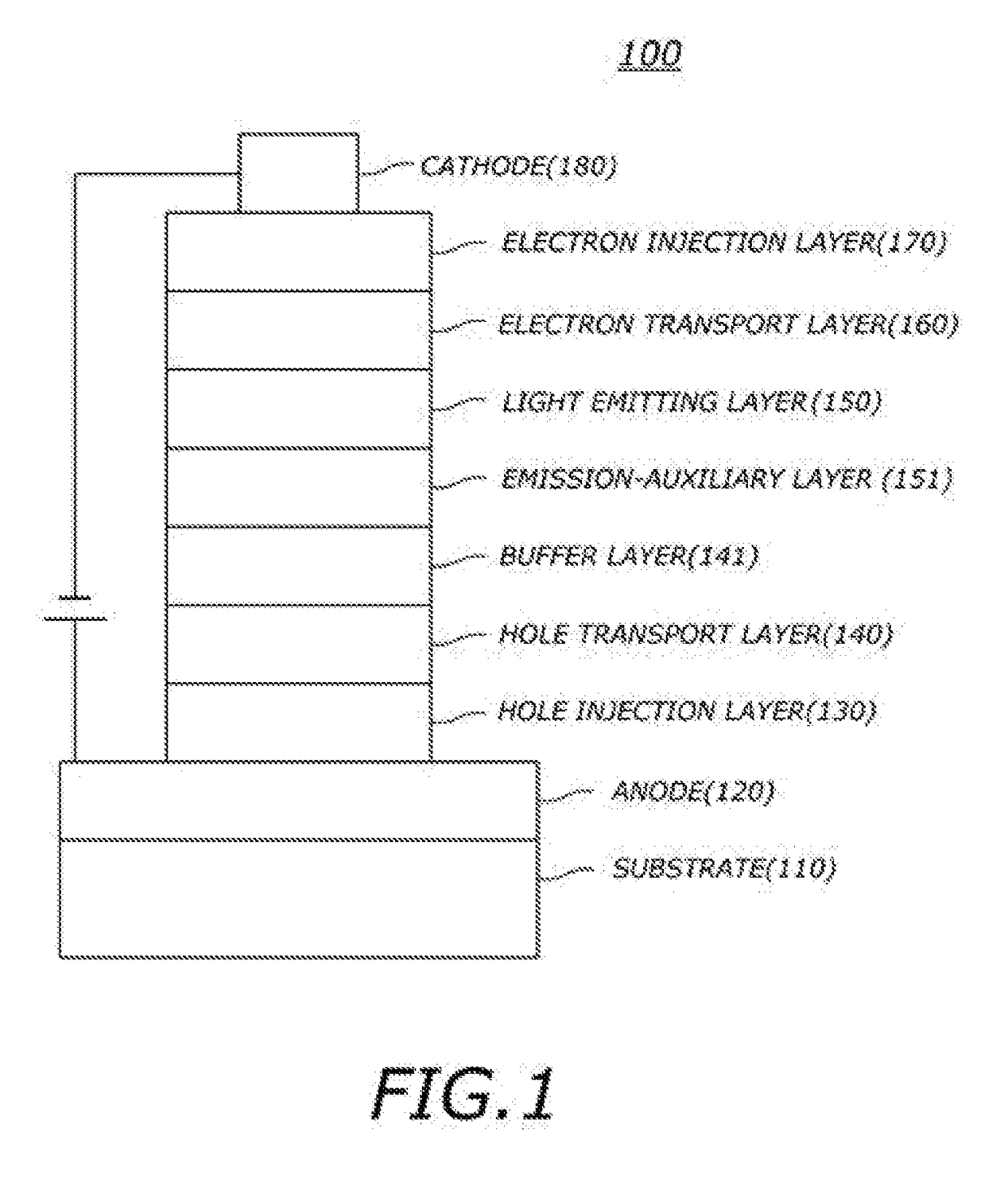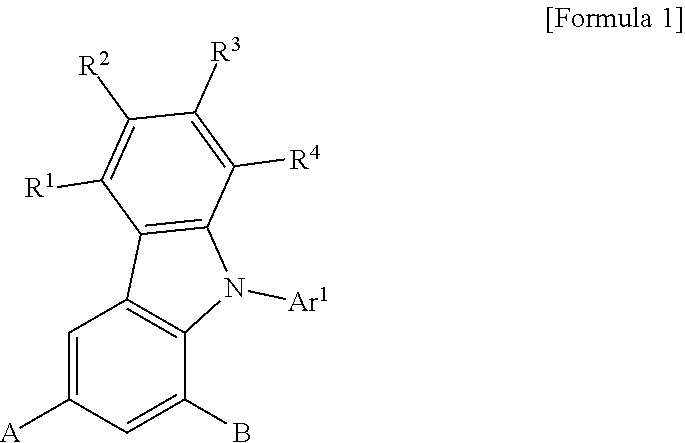Compound for organic electric element, organic electric element comprising the same and electronic device thereof
a technology of organic electric elements and organic electric elements, which is applied in the direction of luminescent compositions, organic chemistry, chemistry apparatus and processes, etc., can solve the problems of power consumption, efficiency and life span, and power consumption is an important issue, so as to improve the luminous efficiency, color purity and life span of the device, and the effect of lowering the driving voltage of organic electronic elements
- Summary
- Abstract
- Description
- Claims
- Application Information
AI Technical Summary
Benefits of technology
Problems solved by technology
Method used
Image
Examples
example 28
[Example 2] to [Example 28]
Green OLED (An Emission-Auxiliary Layer)
[0130]The OLEDs were fabricated in the same manner as described in Example 1 except that any one of the inventive compounds described in Table 4 instead of the inventive compound 1-1 was used as an emission-auxiliary layer material.
example 29
Red OLED (An Emission-Auxiliary Layer)
[0134]Organic light emitting diodes (OLEDs) were fabricated according to a conventional method by using a compound of the present invention as an emission-auxiliary layer material.
[0135]First, an ITO layer (anode) was formed on a glass substrate, and a film of 2-TNATA was vacuum-deposited on the ITO layer to form a hole injection layer with a thickness of 60 nm. Subsequently, NPB was vacuum-deposited with a thickness of 60 nm on the hole injection layer to form a hole transport layer.
[0136]Subsequently, the compound 1-2 of the present invention was vacuum-deposited on the hole transport layer to form a emission-auxiliary layer with a thickness of 20 nm.
[0137]A light emitting layer with a thickness of 30 nm was deposited on the emission-auxiliary layer by using the CBP as a host material and bis-(1-phenylisoquinolyl)iridium(III)acetylacetonate (“(piq)2Ir(acac)”) as a dopant material in a weight ratio of 95:5.
[0138]Next, BAlq was vacuum-deposited ...
example 30
[Example 30] to [Example 56]
Red OLED (An Emission-Auxiliary Layer)
[0140]The OLEDs were fabricated in the same manner as described in Example 29 except that any one of the inventive compounds described in Table 5 instead of the inventive compound 1-2 was used as an emission-auxiliary layer material.
PUM
| Property | Measurement | Unit |
|---|---|---|
| thickness | aaaaa | aaaaa |
| thickness | aaaaa | aaaaa |
| thickness | aaaaa | aaaaa |
Abstract
Description
Claims
Application Information
 Login to View More
Login to View More - R&D
- Intellectual Property
- Life Sciences
- Materials
- Tech Scout
- Unparalleled Data Quality
- Higher Quality Content
- 60% Fewer Hallucinations
Browse by: Latest US Patents, China's latest patents, Technical Efficacy Thesaurus, Application Domain, Technology Topic, Popular Technical Reports.
© 2025 PatSnap. All rights reserved.Legal|Privacy policy|Modern Slavery Act Transparency Statement|Sitemap|About US| Contact US: help@patsnap.com



